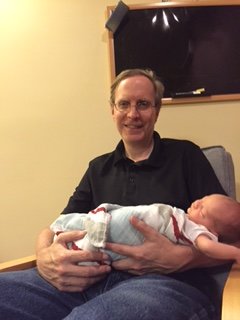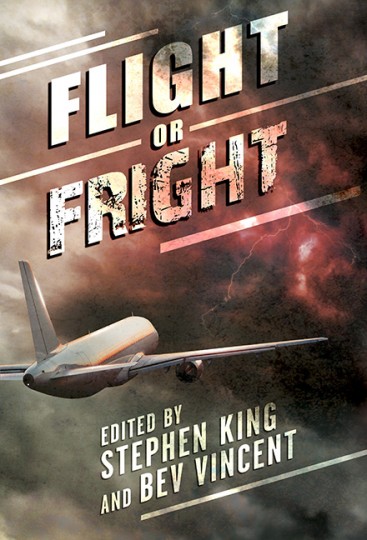 I was happy that Air Canada finally delivered my delayed luggage to my door. Less happy that they chose to do so at 12:30 am. As a remedy for recovering from jet lag, I can’t recommend getting woken up in the middle of the night highly enough.
I was happy that Air Canada finally delivered my delayed luggage to my door. Less happy that they chose to do so at 12:30 am. As a remedy for recovering from jet lag, I can’t recommend getting woken up in the middle of the night highly enough.
So, I’m back from a week in Okinawa, where I got to meet my grand-daughter for the first time. In this picture, she is one week old.
My trip across the Pacific took me to Calgary, then Tokyo and finally to Naha, Okinawa. Breaking the trek into parts seems to help, although the 4-hour layover in Narita was a bit of a killer, making the final 3-hour flight at the end of a 24-hour trip brutal. The layovers were much shorter on the return trip, and I was able to complete the journey in a mere 20 hours.
This was my first time on Okinawa, where my daughter and her husband (and, now, their daughter) have been living since last fall. Until they went there, I didn’t have a firm grasp on where Okinawa was, but it’s like Japan’s Hawaii. It’s a long way from the “mainland,” and is tropical, has sandy beaches and coral reefs and surf. It’s closer to Taiwan and Korea than Tokyo, I believe. It has a slightly different historical tradition than Japan, too, so the culture is somewhat different. It rained a lot during the week, mostly thanks to Super Typhoon Nepartak, which missed the island on its way to Taiwan but caught us with its outer bands. Good thing it missed—at one point it was offering gusts of wind in excess of 200 mph. A buoy registered a pressure of 897 millibars, which is really, really low, indicative of a very powerful storm.
It takes a long time to get anywhere on the island. In the cities and towns, the roads are narrow, with lots of stops. There is a toll expressway, but even there the maximum speed is 80 km/hr (50 mph). Thanks to Google maps, we were able to navigate without too much trouble. I don’t know what we would have done without it. The hospital where my granddaughter was born is visible from the expressway, but the route to it from the exit was convoluted, and the fact that we couldn’t really read the street signs didn’t help! My wife did all the driving (she lived in the UK for 5 years and has more experience driving on the right) and I navigated.
The American military presence in Okinawa is contentious and strongly felt. Kadena is the biggest base, and just about everywhere we went we encountered Air Force personnel, many of them very loud and very brash, which is at odds with Japanese culture. We went to a curry restaurant one night and the place was packed with young men, many of them still teenagers, yelling and roaring at the tops of their lungs. My daughter and her husband have encountered that a number of times before and have been so uncomfortable that they’ve left the establishment.
We didn’t really do much sight seeing, but we covered the stretch from Naha, where the airport is to Nishara (hospital) to Kadena (restaurants and shops) to Onna (apartment) a number of times. That accounts for about half the length of the island. We didn’t have many language problems, though our trip to the grocery store was interesting. Figuring out whether those were ham slices or chicken at the deli was a real challenge (we got it wrong).
I watched a lot of movies in transit. On the return flight, I saw Whiskey Tango Foxtrot with Tina Fey, which was a lot more serious than I expected, but that wasn’t a bad thing. The trailers focused on the funny bits (stopping the convoy so she could pee; the clip where the Afghani woman driver accidentally shifts into reverse) but it’s a decent look at the lives of embedded reporters, and Fey is a compelling viewpoint character. I liked it a lot. Then I watched a German movie called Grüße aus Fukushima (Greetings from Fukushima). It’s about a self-absorbed young German woman who has a personal setback, so she joins an organization that sends her to Japan to be a clown to entertain a group of elderly people who are still in a shelter after the tsunami. She has a hard time fitting in, but she befriends one woman, Satomi, who is determined to return to her destroyed family home in the “dead zone” caused by the flood and nuclear incident. It’s an east-meets-west kind of story that reveals a lot about the Japanese culture as the two come to understand each other and their personal tragedies. It’s also a ghost story. A touching drama in black and white. Completing my international film festival, I watched a Canadian movie called The Confirmation starring Clive Owen, Maria Bello and Jaeden Lieberher (who will be Bill Denborough in the forthcoming It. Owen is a recovering alcoholic who is looking after his son for the weekend. He’s struggling to find work, and when his valuable carpentry tools are stolen, he is launched on an improbable journey to try to get them back, with son in tow. They meet a bunch of shifty characters (including Patton Oswalt as the shiftiest of the bunch) and learn a lot about each other along the way.
On the trip over, I watched Spectre, the latest James Bond, which was pretty good, and an hour-long documentary about Queen from their early days through the recording of “Bohemian Rhapsody”. I saw something else, too, I’m sure, but I can’t recall it at the moment. Thanks jet lag.
I caught up on Aquarius and Murder in the First (an interesting and timely plot development involving the Black Lives Matter movement and a scene in which a black cop shoots a black suspect) since I got back, and watched the first episode of Irdis Elba: No Limits, in which he practices to become a rally driver and tackles his first rally drive in Ireland. My favorite quote from the episode was this: “I’ll tell you one thing about flipping cars (i.e., rolling over): once you’ve done it…you don’t want to do it again.” It was also fun seeing Tess Gerritsen cameo-ing on Rizzoli & Isles in a meta-scene where the author gets to meet her creations.

